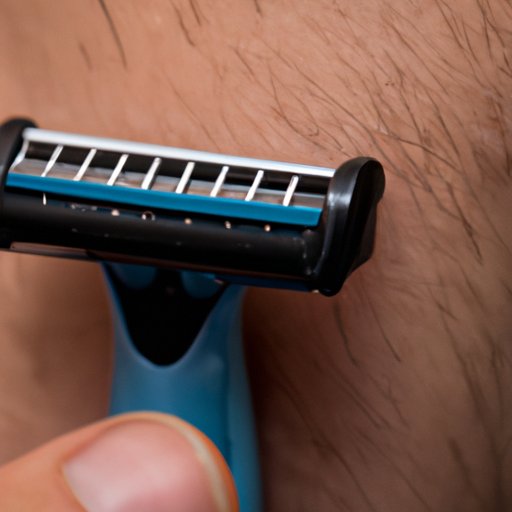I. Introduction
Razor bumps, also known as pseudofolliculitis barbae or ingrown hairs, are a skin condition that can be uncomfortable, irritating, and unsightly. These bumps occur when hair curls back into the skin after shaving, causing inflammation, redness, and pimples. Razor bumps usually affect men who have coarse or curly hair, but anyone can develop them. In this article, we will explore some tips to prevent razor bumps and achieve smoother, bump-free skin.
II. Prepping your skin before shaving
Proper cleaning of the skin is essential before shaving. Make sure to wash your face or the area to be shaved with warm water and a gentle, pH-neutral cleanser. Avoid using harsh soaps or scrubs that can dry out your skin or strip its natural oils. After cleaning, use a pre-shave oil or cream to soften the hair and protect the skin from razor burn. Pre-shave products can also help the razor glide smoothly and reduce friction.
III. Using a high-quality razor
Using a disposable razor or a dull blade is a recipe for razor bumps. These types of razors can tug and pull the hair instead of cutting it cleanly, leading to irritation and ingrown hairs. Invest in a quality razor with a sharp blade that suits your skin and hair type. Consider using a safety razor or an electric razor for more precise and gentle shaving. Remember to replace your razor or blade regularly, as dull edges can cause more harm than good.
IV. Shaving with the grain
One of the most critical factors in preventing razor bumps is shaving with the grain of your hair, or in the direction it grows. Shaving against the grain can cut the hair too short or pull it in the wrong direction, causing irritation, inflammation, and ingrown hairs. Shaving with the grain may not give you the closest shave, but it will reduce the risk of razor bumps. To determine your hair growth direction, run your fingers over your stubble, and feel the direction it lies flat.
V. Avoiding tight-fitting clothing
Tight-fitting clothing can be a trigger for razor bumps, especially in the neck and jawline areas. The friction between the clothes and the skin can cause further irritation and inflammation, making the bumps worse. To prevent this, wear loose-fitting clothing that allows the skin to breathe and move freely. Avoid wearing anything too tight or constricting, such as turtlenecks, collared shirts, ties, or scarves. If necessary, apply a thin layer of anti-chafing balm or powder to the affected area to reduce friction and moisture.
VI. Using a cooling aftershave
After shaving, it’s essential to apply an aftershave that cools and soothes the skin. Cooling aftershaves contain ingredients like menthol, tea tree oil, or aloe vera that provide a refreshing sensation and reduce inflammation. These ingredients can also help prevent infection and hydrate the skin. Avoid aftershaves that contain alcohol, fragrance, or harsh chemicals that can dry out or irritate the skin. Look for aftershaves that are labeled “for sensitive skin” or “non-comedogenic” if you are prone to razor bumps.
VII. Regular exfoliation
Exfoliating the skin regularly can prevent razor bumps by removing dead skin cells and unclogging the hair follicles. Exfoliation can also help prevent ingrown hairs by lifting the hair off the skin and allowing it to grow in the right direction. However, be gentle when exfoliating, as harsh scrubs or brushes can cause micro-tears in the skin and aggravate razor bumps. Use a gentle exfoliating scrub or a soft-bristled brush once or twice a week, depending on your skin type and sensitivity.
VIII. Regular moisturization
Keeping the skin moisturized is crucial in preventing razor bumps. Dry or dehydrated skin is more prone to irritation, inflammation, and ingrown hairs. Use a moisturizer that contains skin-nourishing ingredients, such as shea butter, jojoba oil, or ceramides. Apply the moisturizer after shaving and throughout the day as needed. Avoid moisturizers that contain fragrances, dyes, or heavy oils that can clog the pores or cause allergic reactions.
IX. Conclusion
Preventing razor bumps is possible with proper pre-shaving preparation, high-quality razors, shaving with the grain, avoiding tight-fitting clothing, using a cooling aftershave, regular exfoliation, and moisturization. By implementing these tips and making them a part of your grooming routine, you can enjoy smoother, bump-free skin. Remember also that not all skin is the same, so it might take some trial and error to figure out which techniques or products work best for you. Stay patient and persistent, and you’ll eventually find the right combination for your needs.
